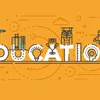Ideas on using technology for learning
Technology has helped personalise learning by focusing on each child’s learning capability, helping teachers assess how receptive the child is, and providing valuable insights on areas that he or she needs to improve.
Imagine that five people go to a doctor and complain they have fever. Further imagine that the doctor tells them, “Oh, you all have fever, so please take this medicine for fever.” Why does this example sound ridiculous? Why do we expect that the doctor will probe into symptoms, maybe ask for tests and then prescribe different medicines for them?
It is because the idea of personalisation is central to medicine and our perception of it.
The same is true in education also – each of us has different strengths and interests, and learns in different ways. This includes different paces of learning, different ways of learning and different conditions under which we learn most effectively. Yet, our classes are grouped by age and usually have one teacher instructing all the students together.
When COVID-19 struck, we were all forced into ‘isolation’. The class could not gather together any more – presenting a unique opportunity to learn at our own pace, schedule and manner. Yet studies show that the most popular mode of learning in the COVID season has been live online classes.
Apart from many ed-tech companies, schools too felt that it was important for students (and their parents) to see their teachers teaching live on Zoom classes. In other words, even when the situation forced an almost radical change on us, we went back to the familiar with a bit of adaptation using technology.
Online live classes certainly give an appearance of learning and though they have some value, may not be the most effective way to learn. Let us look at some of the more effective tools and methods that technology affords and we would do well to use in times like these and beyond.
It is important to understand at the outset that no technology, however sophisticated or friendly, can replace educational research. Technology is a supplement, not a replacement, for good pedagogy. Yet technology can extend pedagogical insight in very substantial ways.
ALSO READ

Making assessments a part of learning
In a traditional classroom, assessments are seen as an activity at a final stage of learning. Even in that situation, however, good teachers use formative assessments – sometimes just a question asked to the class or specific students while teaching – to gauge how well children are learning.
Now imagine that with technology, we can get not only what thousands of children are finding difficult or have mastered but also the areas of greater and lesser difficulty. Low stakes assessments conducted using technology can provide deep insights into which topics are more difficult for children and why.
They guide learners not just on what topics they need to spend more time on, but pinpoint what is not being understood. Topic tests delve into students’ understanding of specific concepts and provide almost immediate feedback on whether the student is ready to move ahead.
Technology-enhanced items
As the term implies, these are questions and activities where students do not simply select an option from multiple choices or fill in a blank. Rather, they are required to manipulate something on the screen. The steps they take – sometimes even which part of the question they focus on – provides deep insights into what has been learnt.
While such information is useful for any student, when the information is collated over thousands or students, it provides valuable feedback for teachers and even textbook writers.
Active learning
Probably the most powerful feature of technology used well is its ability to promote active learning. Active learning is when the student is actively involved in the learning process – we use a benchmark that a student is doing something at least once every 40 seconds or so. It could be answering a question, manipulating an object in an activity or writing something.
In contrast, watching videos or reading text are passive. While they can help, it is useful to track how many times children are actively engaged something in, say, a 40-minute session. Note that we are not merely talking of physically doing something but referring to mental involvement.
Adaptive learning
That brings us to adaptive learning. A big challenge of the traditional classroom – whether in a physical room or with children sitting in front of screens at their homes – is that every child is NOT at the same level and the material the teacher covers may be too high for some, too low for others, interesting for some and boring for others.
Adaptive learning refers to using technology to determine the child’s level and pose questions and activities that match that level. Though we use the term ‘level’ as if adaptivity relates to moving up a ladder, we should actually see it as selecting from a mesh of skills and posing challenges from the skill the student needs to or is ready to learn at a specific point in time.
Collaborative/group learning
Students learn a lot from each other and sometimes peer learning can be even more effective. Technology, as we know, can enable richer peer learning than is possible in a physical situation. It also allows every child to participate and a quiet child to both learn better and contribute to group learning.
Writing explanations
There are many tasks which technology enables – one example is where students are asked to not only answer a question but write an explanation for the same. Not only does this develop valuable skills in children, the fact that teachers (or others like parents) or peers can comment on them enriches learning if used effectively.
Don’t forget the challenges
Technology too, like any other tool, is not a panacea and needs effective adult guidance to work well. Children need face-to-face interaction with teachers and their peers and too much technology can come in the way of that.
Bad quality technology products is also a huge threat as those are numerous. If used with care, technology can help us leapfrog learning and achieve high quality for learning.
(Disclaimer: The views and opinions expressed in this article are those of the author and do not necessarily reflect the views of YourStory.)








